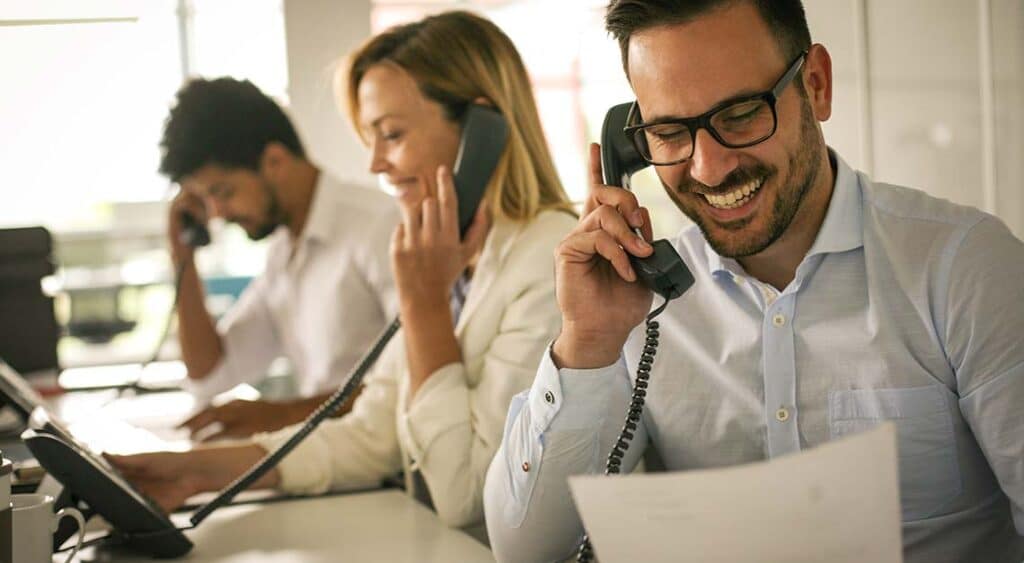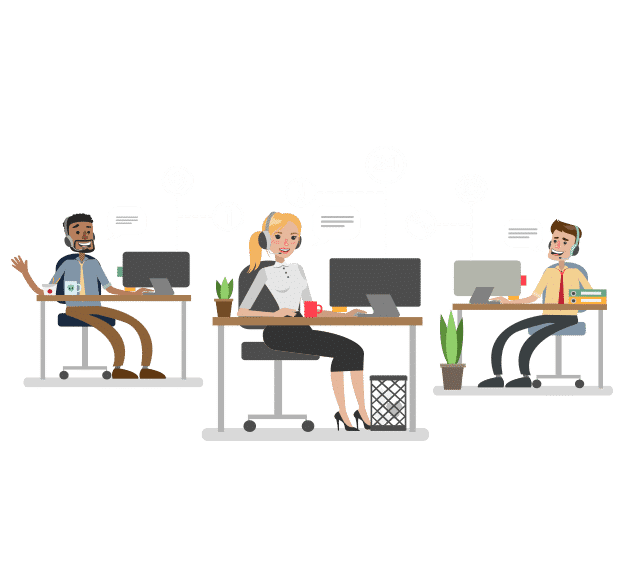All Categories
Featured
Table of Contents
Which Is The Best Call Answering Service Plan
This gadget and its followers were developed by Sava Jacobson, an electrical engineer with a private consulting organization. While early voice mail used magnetic tape innovation, a lot of modern devices utilizes solid state memory storage; some devices use a mix of both, with a solid-state circuit for the outgoing message and a cassette for the incoming messages.
"toll saving" listed below) (answering service). This is useful if the owner is screening calls and does not wish to speak with all callers. In any case after going, the calling celebration should be notified about the call having been responded to (most of the times this begins the charging), either by some remark of the operator, or by some welcoming message of the little, or dealt with to non-human callers (e.
This holds especially for the Little bits with digitally kept greeting messages or for earlier machines (prior to the increase of microcassettes) with a special limitless loop tape, separate from a second cassette, dedicated to recording. There have been answer-only gadgets with no recording capabilities, where the welcoming message needed to inform callers of a state of current unattainability, or e (phone answering).
What Is The Best What Is An Answering Service? For Your Money

about accessibility hours. In recording TADs the greeting generally includes an invitation to leave a message "after the beep". A voice mail that utilizes a microcassette to tape messages On a dual-cassette answerphone, there is an outgoing cassette, which after the defined number of rings plays a pre-recorded message to the caller.

Single-cassette voice mail contain the outgoing message at the beginning of the tape and inbound messages on the remaining area. They initially play the statement, then fast-forward to the next offered area for recording, then record the caller's message. If there are numerous previous messages, fast-forwarding through them can cause a significant delay.
This beep is typically described in the welcoming message, requesting that the caller leave a message "after the beep". Little bits with digital storage for the recorded messages do not reveal this hold-up, naturally. A little bit might provide a push-button control center, whereby the answerphone owner can sound the home number and, by getting in a code on the remote telephone's keypad, can listen to tape-recorded messages, or delete them, even when far from home.
What Is The Best What Is An Answering Service? - Ruby Blog?

Thus the machine increases the variety of rings after which it addresses the call (normally by two, leading to four rings), if no unread messages are presently saved, but responses after the set variety of rings (normally 2) if there are unread messages. This permits the owner to learn whether there are messages waiting; if there are none, the owner can hang up the phone on the, e.
Some makers also allow themselves to be remotely activated, if they have actually been turned off, by calling and letting the phone ring a specific a great deal of times (typically 10-15). Some company abandon calls already after a smaller sized variety of rings, making remote activation difficult. In the early days of Little bits a special transmitter for DTMF tones (dual-tone multi-frequency signalling) was regionally required for remote control, considering that the previously utilized pulse dialling is not apt to communicate proper signalling along an active connection, and the dual-tone multi-frequency signalling was implemented step-by-step.
Any incoming call is not identifiable with regard to these properties in advance of going "off hook" by the terminal equipment. So after going off hook the calls must be changed to appropriate gadgets and only the voice-type is instantly available to a human, but maybe, nevertheless must be routed to a TAD (e.
What Is A Good Price For A Faqs - The Phone Answering?
What if I informed you that you do not need to in fact pick up your device when answering a consumer call? Someone else will. So convenient, ideal? Answering phone calls doesn't need somebody to be on the other end of the line. Efficient automated phone systems can do the technique just as efficiently as a live agent and in some cases even much better.
An automatic answering service or interactive voice response system is a phone system that communicates with callers without a live person on the line - business call answering service. When companies use this innovation, consumers can get the response to a concern about your organization merely by utilizing interactions established on a pre-programmed call circulation.
Although live operators upgrade the client service experience, numerous calls do not need human interaction. A simple taped message or directions on how a consumer can retrieve a piece of details usually resolves a caller's immediate need - business call answering service. Automated answering services are an easy and reliable method to direct incoming calls to the ideal person.
What's The Best 24/7 Phone Answering - Au-based Operators - Alltel Australia Brand
Notification that when you call a business, either for assistance or product query, the very first thing you will hear is a pre-recorded voice welcoming and a series of alternatives like press 1 for consumer service, press 2 for inquiries, and so on. The pre-recorded choices branch out to other choices depending upon the customer's choice.
The phone tree system assists direct callers to the ideal individual or department utilizing the keypad on a smart phone. In some instances, callers can use their voices. It's worth keeping in mind that auto-attendant alternatives aren't restricted to the 10 numbers on a phone's keypad. As soon as the caller has actually picked their first alternative, you can create a multi-level auto-attendant that utilizes sub-menus to direct the caller to the ideal sort of help.
The caller does not need to communicate with an individual if the auto-attendant phone system can handle their issue. The automatic service can path callers to a staff member if they reach a "dead end" and require help from a live agent. It is costly to employ an operator or executive assistant.
What's The Best Call Answering Service
Automated answering services, on the other hand, are significantly less costly and offer substantial cost savings at an average of $200-$420/month. Even if you don't have dedicated staff to handle call routing and management, an automatic answering service enhances productivity by allowing your team to focus on their strengths so they can more effectively spend their time on the phone.
A sales lead routed to client service is a lost shot. If a consumer who has product questions reaches the incorrect department or receives incomplete answers from well-meaning workers who are less trained to deal with a particular kind of concern, it can be a cause of aggravation and frustration. An automated answering system can minimize the variety of misrouted calls, thereby assisting your workers make better usage of their phone time while maximizing time in their calendar for other tasks.
With Automated Answering Systems, you can develop a customized experience for both your staff and your callers. Make a recording of your main greeting, and just upgrade it routinely to reflect what is going on in your organization. You can create as many departments or menu options as you desire.
Latest Posts
Effective Medical Answering Service Near Me – Australia
Expert After Hours Answering Service – North Sydney
Effective Custom Phone Answering